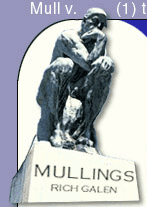
|
Subscribe Today!
Click here for an Easy Print Version We went to Arlington National Cemetery to attend the annual Memorial Day observance. The Lad was in charge of President Bush's appearance and he graciously offered to get us seats in the Amphitheater to watch. The entrance to Arlington National Cemetery is directly across the Potomac River from the Lincoln Memorial. These two historical - mystical - sites are connected by the Memorial Bridge. At the entrance there is a sign which asks visitors to remember this is an active cemetery with the words: "Welcome to Arlington National Cemetery, The Mullings Director of Standards & Practices and I made our way up the walkways, past the many small groups of school-aged children and their chaperones listening to docents explain what they were looking at. They were looking at rows and rows of American flags which had been placed in the ground front of each and every headstone. There are over a quarter of a million people buried at Arlington. Generals and privates. Admirals and seamen. Each headstone gets its own flag. Each flag, the same size. We walked the grounds, map in hand, grass wet from days of thunder storms, the morning still cloudy and threatening. We paused and reflected, having found what we were looking for. We made our way to the Amphitheater where the ceremony would take place. The Lad spotted us. As he led us to our seats we each took one of the small American flags which were being handed out by elderly vets. Holding my flag, I read the inscription above the stage: "We, here, highly resolve that those dead shall not have died in vain." On cue, the Air Force Band and Chorus began to perform. On cue, the sun peeked out. An announcer informed us we would hear a 21-gun salute signaling the arrival of the President on the grounds. Off in the distance, there was an order followed by the report of a cannon, then another order, another report, and so on. Twenty-one times. During it all, the crowd stood silently. The announcer then said the Army Band would play the National Anthem, after which the President would lay a wreath at the Tomb of the Unknowns. The Tomb of the Unknowns is located to the rear of the Amphitheater on a large, elevated deck, out of our sight. At the playing of the National Anthem, the military personnel snapped a salute and everyone else put hands on hearts. After a delay, during which the wreath was placed, we could hear, very faintly, the sound of taps. The crowd was hardly breathing; as if breathing might drown out the sound of the bugle. The President arrived on the stage without Ruffles and Flourishes. Mrs. Bush took her seat, without fanfare. After the opening prayer, there was a recitation of letters written by young men in different wars, in different places. When it was completed, there was no applause. The crowd was silent. This was not a ceremony of pomp and circumstance. Nor an occasion for soaring rhetoric. The President spoke, quietly, of sacrifice, and of duty, and of honor. He spoke of young men and young women who would never live out their lives. He spoke of the last kiss between a husband to his wife; the last wink and wisecrack of a brother to a sister as a train pulled out of a station; a father and son hugging for the final time at an airline boarding gate. Afterwards, we stood amid the crowd watching, silently, the Changing of the Guard at the Tomb of the Unknowns; the military ballet which takes place 24 hours a day, seven days a week. Arlington National Cemetery, on Memorial Day, has nothing to do with the sweep and grandeur of history, nor the gigantic commitment of resources to battles and wars; nor grand strategies and brilliant tactics. It is the place where - and the day when - we remember the men and women who were killed at Pearl Harbor, and on Omaha Beach, and at Bull Run, and Verdun, and in Korea, and Viet Nam, and Afghanistan, and all the other un-locatable places with unpronounceable names where we have sent young men and women to fight and, too often, to die. Arlington National Cemetery, on Memorial Day, has everything to do with a single white headstone. Nestled in a neat row among all the other white headstones next to it, in front of it, and behind it. Up hills and down swales. We had paused at one white headstone, among a quarter of a million others. The one with the words:
Flags in hand, in the wet grass, on a gray morning, of Memorial Day, at Arlington National Cemetery, we paid our respects to her dad. And prayed, silently, that he rest. In peace.
Copyright © 2002 Richard A. Galen
The Secret Decoder Ring page today is a series of photos of Arlington National Cemetery.
|






